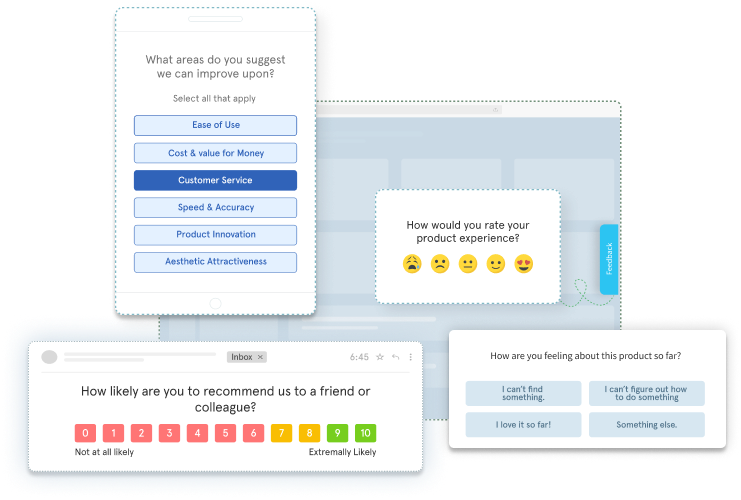In today’s digital-first world, businesses no longer have to guess what their customers want—they have access to a wealth of insights at their fingertips. Every interaction, from online reviews to social media discussions, holds valuable feedback that can shape better products, improve services, and drive customer loyalty. But the real challenge? Turning this vast amount of customer data into meaningful action.
Digital feedback is more than just star ratings and survey responses. It’s a continuous stream of insights drawn from social media platforms, user groups, and real-time interactions. By leveraging advanced tools like natural language processing, event-driven data analysis, and data visualization, businesses can understand sentiment, identify trends, and make data-backed decisions faster than ever before.
When combined with business intelligence strategies, digital feedback helps companies engage customers more effectively, refine their offerings, and stay ahead of the competition. Whether you’re looking to enhance user experience or fine-tune your marketing approach, understanding how to collect and implement digital feedback is essential for success in a data-driven landscape.
In this article, we’ll explore the power of digital feedback, how to collect and analyze it, and how leading businesses are using it to gain a competitive edge. Let’s dive in.
TL;DR
- Digital feedback involves collecting insights through online channels like websites, mobile apps, and social media, allowing businesses to understand and respond to customers in real-time.
- It offers real-time insights for agile decision-making, helps scale feedback across touchpoints, and drives customer engagement and data-driven product development.
- Website feedback, in-app feedback, in-product feedback, email feedback, live chat feedback, and social media feedback are some of the most popular digital feedback collection methods.
- HubSpot, Sephora, and Mayo Clinic are among the popular companies that use digital feedback to improve customer satisfaction, personalize experiences, and enhance service quality.
- To implement a powerful digital feedback system, you need to choose the right tools, design effective feedback mechanisms, integrate feedback across channels, and automate the process.
- You can use a customer experience software like Zonka Feedback to get real-time analytics, customizable surveys, and AI-driven tools to efficiently capture, analyze, and act on digital feedback. Sign up for a 14-day free trial or schedule a demo to get started on your digital feedback journey!
Fuel Growth with Digital Feedback
Collect real-time, in-moment feedback across all digital touchpoints in customer journey with Zonka Feedback and leverage AI insights to transform the customer experience.

The Evolution of Feedback in the Digital Age
The shift from traditional to digital feedback is more than just new tools—it’s a transformation in how businesses engage with customers. Traditional methods like paper surveys and phone interviews were slow and limited, often delaying actionable insights. In contrast, digital feedback offers real-time data through online surveys, in-app prompts, and social media monitoring, enabling companies to make swift, informed decisions.
This instant feedback from diverse channels ensures a comprehensive understanding of customer needs, turning feedback into an ongoing conversation rather than a one-time event.
But what exactly is digital feedback? Let us first answer that.
What is Digital Feedback?
Digital feedback is the real-time insight customers share through online channels like websites, mobile apps, and social media. Whether it's an in-app survey, chatbot interaction, or a comment on a social media post, this feedback captures the voice of the customer, providing valuable data on their digital experience. Unlike traditional methods that take weeks to process, digital feedback allows businesses to understand customer sentiment instantly and take action accordingly.
Imagine a SaaS company that integrates a website feedback widgets directly into its platform. As users navigate the product, they can quickly share thoughts on usability, features, or any issues they encounter. This continuous feedback loop enables the company to make real-time improvements, ensuring the product evolves in line with user needs.
By actively collecting and analyzing digital feedback, businesses can refine user experiences, address pain points faster, and create more customer-centric strategies. It’s not just about gathering data—it’s about listening, adapting, and delivering what customers truly want.
Importance of Digital Feedback Collection?
With 70% of companies either having a digital transformation strategy or actively developing one, it's clear that integrating digital tools into business processes is crucial for staying competitive. Here are some compelling reasons why you must prioritize digital feedback collection for your business.
- Real-Time Insights for Agile Decision-Making: Digital feedback provides real-time insights, enabling you to react promptly and effectively. Speed is critical—imagine an e-commerce platform discovering a checkout glitch during a flash sale. With digital feedback, the issue is flagged and resolved within hours, preventing lost sales and preserving customer trust. This agility is essential in maintaining a competitive edge.
- Scalability to Capture Feedback Across Touchpoints: Digital feedback tools scale seamlessly, capturing insights from websites, mobile apps, emails, and more. This scalability ensures that every customer voice is heard, no matter where they engage with your brand. A multinational corporation, for example, can collect and analyze feedback globally, customizing their products to regional preferences and enhancing overall customer satisfaction.
- Enhanced Customer Engagement and Loyalty: When customers see their feedback leading to tangible improvements, their loyalty deepens. Digital feedback offers a convenient and immediate way for customers to share their opinions. For instance, a software company might update its features based on user feedback, then inform users of these changes, reinforcing the message: "We listen to you." This builds trust and promotes long-term loyalty.
- Data-Driven Product Development: Basing product development on real customer feedback, rather than assumptions, ensures that new features align with actual needs. For example, a tech startup might use digital feedback from beta testers to refine a confusing app feature before launch. This approach not only improves the product but also reduces the risk of costly post-launch revisions. Data-driven decisions lead to more successful products that resonate with users from day one.
Types of Digital Feedback & Their Relevance
Digital feedback is not a one-size-fits-all solution; it’s a versatile tool that adapts to various touchpoints within the customer journey. Each type of digital feedback offers unique insights that, when combined, provide a comprehensive understanding of your customers.
Let's explore the different types of digital feedback and their relevance.
a. Website Feedback
Your website is often the first point of contact with customers. Website feedback tools allows you to capture user experience insights as they interact with your content, products, or services online.
For example, imagine a global retailer noticing a high bounce rate on a particular product page. By implementing a quick feedback pop-up, they discover that the page is slow to load on mobile devices. The feedback leads to a prompt optimization of the page, reducing bounce rates and increasing conversions.

Key Strategies for Website Feedback Collection
Utilize these key strategies to gather actionable insights that can drive improvements in user experience and business growth.
- Heatmap Analysis: Heatmaps visualize user behavior on your website, highlighting areas where users are most engaged or frustrated. For instance, if a product page has a high bounce rate, heatmaps can reveal if users are missing key information due to poor layout.
- User Testing: Conducting user testing allows you to observe real users interacting with your website, uncovering pain points that analytics alone might miss. For example, during a user testing session, you might discover that users were struggling to find the checkout button due to its color blending with the background. This insight can lead to a design change that can boost checkout rates significantly.
- A/B Testing: A/B testing enables you to experiment with different versions of website elements to see which performs better. Imagine an e-commerce site testing two versions of a call-to-action button—one with the text "Buy Now" and another with "Add to Cart." The test reveals that "Buy Now" drives 20% more conversions, leading to its implementation across the site.
Examples where Website Feedback Shines
Website feedback provides invaluable insights into various aspects of your online presence. Here are some key areas where it can significantly impact your business:
- Navigation: Ensure users can find what they’re looking for without frustration. Feedback on navigation can reveal if your menu structure is intuitive or if users are getting lost.
- Checkout Process: The checkout process is critical for conversions. Feedback can uncover friction points that might be causing cart abandonment. For instance, if users consistently report issues during checkout, such as confusing forms or slow loading times, addressing these issues can lead to a smoother, more efficient process, thereby reducing cart abandonment.
- Content Relevance: Feedback can help determine whether the content on your site resonates with your audience, guiding adjustments that increase engagement.
b. In-App Feedback
In-app feedback is essential for understanding how users interact with your mobile application in real time. It provides direct insights into the user experience, helping you identify areas for improvement and opportunities to enhance user engagement.
For example, imagine a mobile banking app introducing a new feature. Shortly after launch, users begin to provide feedback directly within the app, highlighting confusion around the new functionality. This feedback allows the development team to quickly iterate on the design, leading to a more intuitive user experience and higher feature adoption rates.
Key Strategies for In-App Feedback Collection
Implement these strategies to gather actionable insights that improve your app’s performance and user satisfaction.
- Micro-Interactions: Enhance the feedback experience with micro-interactions like haptic feedback or subtle animations. For instance, a fitness app could use a small vibration to acknowledge when feedback is submitted, making the process more engaging for users.
- Personalized Feedback: Tailor feedback requests based on user behavior, preferences, or demographics. A streaming service, for example, might prompt feedback after a user finishes watching a show, asking specific questions that align with their viewing habits.
- CSAT Surveys: Incorporate CSAT (customer satisfaction) surveys within the app to measure customer satisfaction and overall experience. A ride-sharing app could use an CSAT survey after a ride, providing insights into the user’s satisfaction with their driver, vehicle, and overall trip experience.
Examples Where In-App Feedback Shines
In-app feedback can be particularly impactful in these key areas:
- Feature Adoption: Feedback collected after the release of a new feature can highlight usability issues or bugs, allowing for rapid improvements. This ensures features are intuitive and meet user expectations.
- User Engagement: Regular feedback can help you understand what keeps users coming back. If users frequently interact with a certain feature, but also report issues, you can optimize that feature to enhance satisfaction and increase engagement.
- Customer Support: In-app feedback provides immediate insights into user problems, enabling quick responses and reducing the need for external customer support. For example, a messaging app could identify and fix a bug reported through in-app feedback before it escalates to a broader issue.
c. In-Product Feedback
In-product feedback is crucial for understanding how users interact with your product in real-time. It provides context-specific insights that help you refine features and improve overall user experience at key touchpoints.
For instance, imagine a project management tool that allows users to provide feedback immediately after completing a task. This real-time feedback helps the team identify usability issues or feature gaps, enabling quick iterations that enhance the product’s effectiveness and user satisfaction.
Key Strategies for In-Product Feedback Collection
Utilize these strategies to gather valuable insights that drive continuous product improvement.
- Contextual Feedback: Collect feedback at specific points in the user journey, such as after completing a task or encountering an error. This ensures the feedback is relevant and actionable. For example, a software tool might prompt users to rate their experience right after using a new feature, providing insights that are directly tied to that interaction.
- Feedback Overlays: Use feedback overlays to gather input without disrupting the user experience. These overlays can provide additional context or ask targeted questions, helping to gather more detailed feedback. For instance, a design software could use an overlay to ask users if a newly introduced tool met their expectations, guiding future improvements.
- Gamification: Introduce gamification elements like points, badges, or rewards to encourage users to provide feedback. A learning platform, for example, could award badges to users who regularly submit feedback, motivating continued engagement and providing a steady stream of insights.
Examples Where In-Product Feedback Shines
In-product feedback is especially effective in the following areas:
- Feature Refinement: Collecting feedback during the use of specific features allows you to understand how well they perform and where they fall short. This helps in making precise adjustments that improve functionality and user satisfaction.
- Bug Identification: Immediate feedback on errors or issues allows for quick fixes, reducing user frustration and maintaining a smooth user experience. For example, a coding platform could use in-product feedback to quickly identify and resolve bugs that might otherwise disrupt the learning process.
- User Engagement: Regularly soliciting feedback during key interactions helps maintain high levels of engagement. It shows users that their opinions are valued and directly influence product development, which can boost loyalty and satisfaction.
d. Email Feedback
Email feedback is a direct and personal way to gather insights from your customers. It allows you to engage with users after key interactions, providing a deeper understanding of their experiences and fostering stronger relationships.
For example, after a luxury hotel stay, a follow-up email asking guests for feedback on their experience can provide detailed insights into areas for improvement. This feedback is invaluable for making targeted enhancements that elevate the guest experience.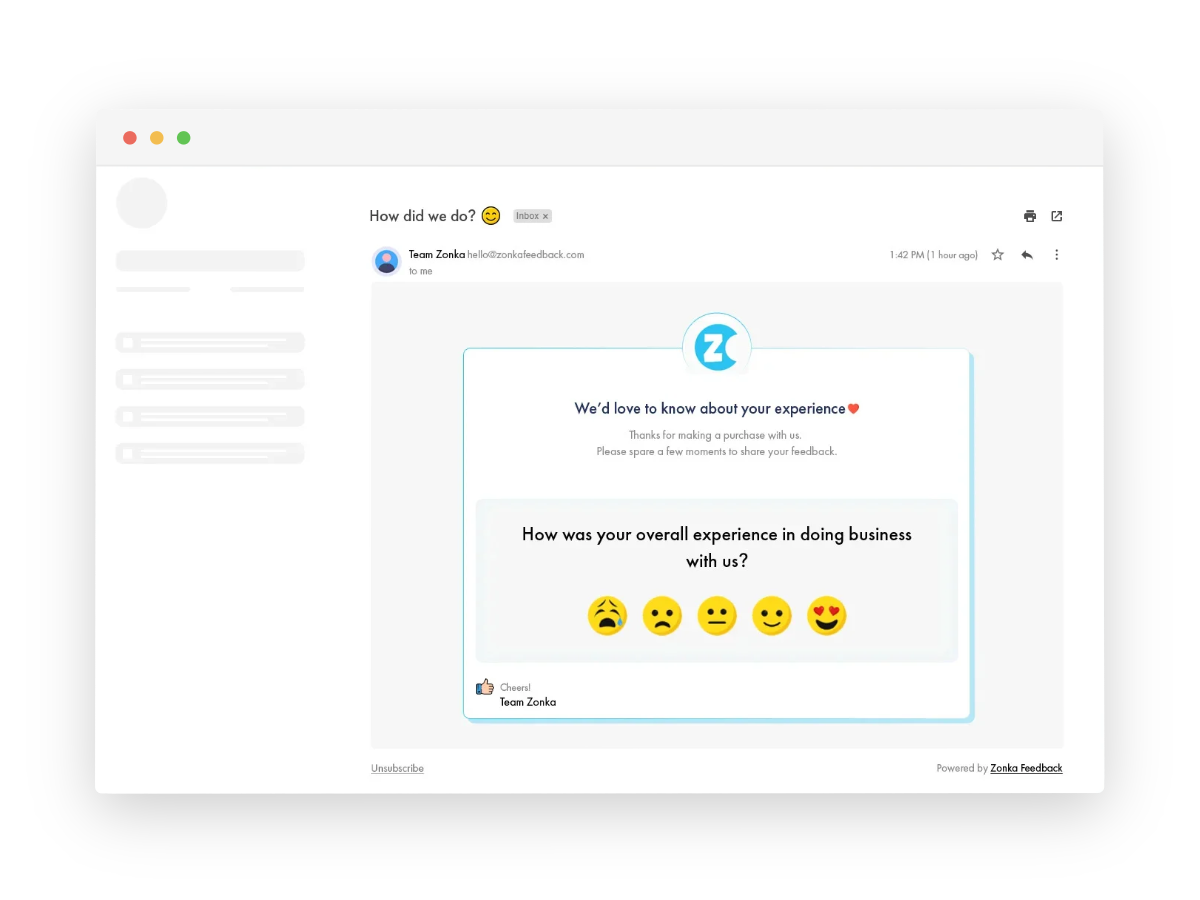
Key Strategies for Email Feedback Collection
Implement these strategies to maximize the effectiveness of your email feedback initiatives.
- Follow-Up Surveys: Send follow-up email surveys after key interactions, such as purchases or customer service exchanges. For instance, a SaaS company might send a survey a week after onboarding to understand the customer’s initial experience and identify areas for improvement.
- Customer Journey Mapping: Use email feedback to map out the customer journey, identifying touchpoints where experiences can be improved. For example, a retailer might collect feedback after each stage of the purchasing process, allowing them to refine the journey and enhance customer satisfaction.
- NPS Surveys: Incorporate NPS (Net Promoter Score) surveys in your email campaigns to measure customer loyalty and advocacy. A subscription service could include an NPS survey in their monthly newsletter, providing ongoing insights into customer satisfaction and the likelihood of referrals.
Examples Where Email Feedback Shines
Email feedback can be particularly powerful in these areas:
- Personalized Customer Interactions: Tailor feedback requests based on customer behavior or past interactions. For instance, after resolving a customer support issue, a personalized email asking for feedback can help gauge the effectiveness of your service and identify areas for further training or process improvement.
- Product Development: Detailed feedback collected via email using product feedback tools can inform product development and updates. A tech company, for example, might ask customers to rate new features in a follow-up email, using this feedback to guide future iterations.
- Customer Retention: Regularly gathering feedback through email can help identify at-risk customers and address their concerns before they churn. For instance, a fitness app might send a feedback email to users who haven’t logged in recently, offering insights into why they’ve disengaged and providing an opportunity to re-engage them with targeted offers or improvements.
e. Live Chat Feedback
Live chat feedback is a powerful tool for enhancing customer service and improving overall user experience. It provides immediate, actionable insights from real-time interactions, allowing businesses to refine their support strategies and increase customer satisfaction.
For example, a tech company might notice recurring issues during live chat sessions about a specific product feature. By analyzing this feedback, they can quickly address the problem, reducing support requests and improving the product.
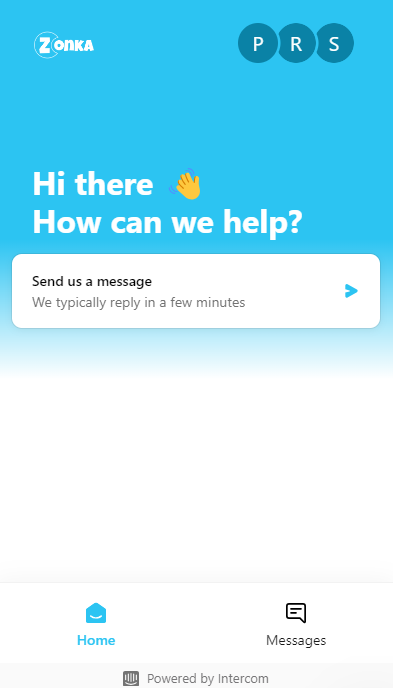
Key Strategies for Live Chat Feedback Collection
Implement these strategies to gather actionable insights and elevate your customer support.
- Sentiment Analysis: Use sentiment analysis tools to evaluate the tone of live chat interactions. For instance, a financial services firm can quickly identify if customers are frustrated during support sessions, prompting immediate corrective actions.
- Agent Training: Regularly review live chat feedback to identify areas where customer service agents can improve. For example, if feedback reveals a lack of knowledge in specific areas, targeted training programs can be implemented to enhance agent performance.
- Knowledge Base Updates: Leverage live chat feedback to keep your knowledge base up to date. If customers frequently ask the same questions during chats, it may indicate that the information is missing or unclear in your self-service resources, necessitating updates.
Examples Where Live Chat Feedback Shines
Live chat feedback offers critical insights that can be leveraged to improve support and customer experience.
- Improving Customer Support: Immediate feedback helps companies quickly identify and resolve issues in customer support, leading to faster resolution times and higher customer satisfaction.
- Proactive Problem Solving: By analyzing trends in live chat feedback, businesses can proactively address common issues before they escalate, improving the overall customer experience.
- Enhancing Product Knowledge: Continuous feedback through live chat can highlight gaps in product knowledge among agents, leading to better training and more informed support.
f. Social Media
Social media feedback is a rich resource for understanding public perception and engaging with your audience in real-time. It provides a direct window into customer thoughts, enabling businesses to respond swiftly and strategically to both praise and criticism.
For example, a global brand may notice a surge in social media mentions following a product launch. By monitoring and analyzing this feedback, they can quickly address any negative sentiment and capitalize on positive trends.
Key Strategies for Social Media Feedback Collection
Leverage these strategies to effectively gather and utilize social media feedback.
- Social Media Listening Tools: Utilize advanced social listening tools to track sentiment, identify influencers, and analyze trends across platforms. This helps you stay ahead of potential issues and spot opportunities for engagement.
- Crisis Management: Monitor social media feedback to quickly identify and respond to crises or negative publicity. For example, if a product receives unexpected backlash, prompt engagement can mitigate damage and restore trust.
- Community Building: Use social media feedback to strengthen relationships with your audience. Engaging with customers who leave positive feedback can turn them into brand advocates, fostering a loyal online community.
Examples Where Social Media Feedback Shines
Social media feedback is invaluable in these critical areas:
- Brand Perception: Real-time feedback allows you to monitor and manage your brand’s public image, ensuring it aligns with your desired positioning.
- Product Launches: Analyzing social media feedback during and after product launches provides immediate insights into customer reactions, enabling rapid adjustments if necessary.
- Customer Engagement: Engaging directly with customers through social media feedback can boost brand loyalty and create a more personal connection with your audience.
Examples of Companies Successfully Using Digital Feedback
Let us look at some of the most successful companies that have leveraged digital feedback collection to improve their performance and achieve business growth.
1. HubSpot
HubSpot emphasizes real-time digital feedback through in-app surveys, user behavior tracking, and customer interviews to inform product development. This feedback helps them align new features and updates with user needs, ensuring that their offerings are both relevant and valuable.
As a result, HubSpot consistently achieves high levels of customer satisfaction and retention, positioning them as a leader in the SaaS industry.
What's their Strategy?
- HubSpot’s unique strategy involves closing the feedback loop by communicating directly with users about the changes made based on their input. This not only builds trust but also fosters a sense of community among users, who feel their voices are truly valued.
- Additionally, HubSpot integrates this feedback into their agile development processes, enabling rapid iteration and continuous improvement.
What Can We Learn?
Implementing a customer feedback system to integrate feedback into the development cycle and maintaining transparency with users about how their input is utilized can lead to stronger customer relationships, higher retention, and more effective product development.
2. Sephora
Sephora collects digital feedback across multiple channels, including website surveys, mobile app interactions, and social media listening, to personalize the shopping experience. This data-driven approach allows Sephora to tailor product recommendations and in-store experiences to individual customer preferences, resulting in a more engaging and satisfying shopping journey.
What's their Strategy?
- Sephora employs AI and machine learning to analyze feedback data, creating personalized product recommendations and targeted marketing campaigns. This strategy has significantly increased customer loyalty and boosted sales, as customers feel understood and valued.
- Sephora also uses feedback to refine their loyalty programs, ensuring that they meet the evolving needs of their most dedicated customers.
What Can We Learn?
Leveraging feedback to personalize customer experiences, especially through the use of advanced technologies like AI, can lead to deeper customer engagement, higher conversion rates, and long-term loyalty. It also highlights the importance of continually evolving customer programs based on real-time feedback.
3. Mayo Clinic
Mayo Clinic uses digital feedback from patient portals, mobile apps, and post-visit surveys to continuously enhance patient care. By emphasizing real-time feedback, they can quickly address concerns such as wait times, service quality, and patient outcomes, ensuring a consistently high standard of care.
What's their Strategy?
- A standout strategy at Mayo Clinic is their integration of feedback into daily operations and decision-making processes. For example, if feedback highlights a recurring issue with a specific department, leadership can take immediate action to address it, improving patient experiences in real-time.
- Additionally, Mayo Clinic uses feedback to tailor patient communications and educational resources, making healthcare more accessible and understandable.
What Can We Learn?
The use of real-time feedback in a healthcare setting is crucial for maintaining high standards of service and quickly addressing issues that could impact patient care. Enterprises can learn the value of integrating feedback into everyday operations to ensure continuous improvement and high levels of customer satisfaction.
Implementing a Powerful Digital Feedback System
Here's how you can implement a powerful digital feedback system for your business.
1. Define Your Goals & Objectives
Implementing a powerful digital feedback system begins with a clear understanding of your goals and objectives. Think of this step as laying the foundation for a skyscraper—without a solid base, everything that follows is at risk.
- Start with the End in Mind: Begin by asking yourself, “What do I hope to achieve with this feedback?” Are you looking to boost customer satisfaction, refine your product, or perhaps understand market trends? Each of these goals will shape how you design your feedback system.
- Set Specific Objectives: Once you’ve identified your broad goals, narrow them down into specific, measurable objectives. If your goal is to enhance customer satisfaction, for instance, you might focus on reducing negative feedback by 20% within the next quarter.
- Align Feedback Goals with Business Strategy: Ensure that your feedback goals align with your overall business strategy. For example, if your company is focused on innovation, your feedback system should be geared towards gathering insights that drive product development and creativity.
2. Choose the Right Tools
Selecting the right tools is crucial for building an effective digital feedback system. The tools you choose will determine how easily you can gather, analyze, and act on feedback, so it’s important to make informed decisions.
You should look for tools that are user-friendly, customizable, and capable of integrating seamlessly with your existing systems. The right tool should make feedback collection intuitive and efficient, without adding unnecessary complexity to your operations. Here are some must have features to look for in a survey tool.
- Real-Time Analytics: Your feedback tool should offer real-time analytics capabilities so that you can identify issues as they arise.
- Sentiment Analysis: Incorporating sentiment analysis into your feedback tool is essential for understanding the emotions behind customer responses.
- Survey Automation: Automating your survey process can save time and ensure consistency in data collection without manual intervention.
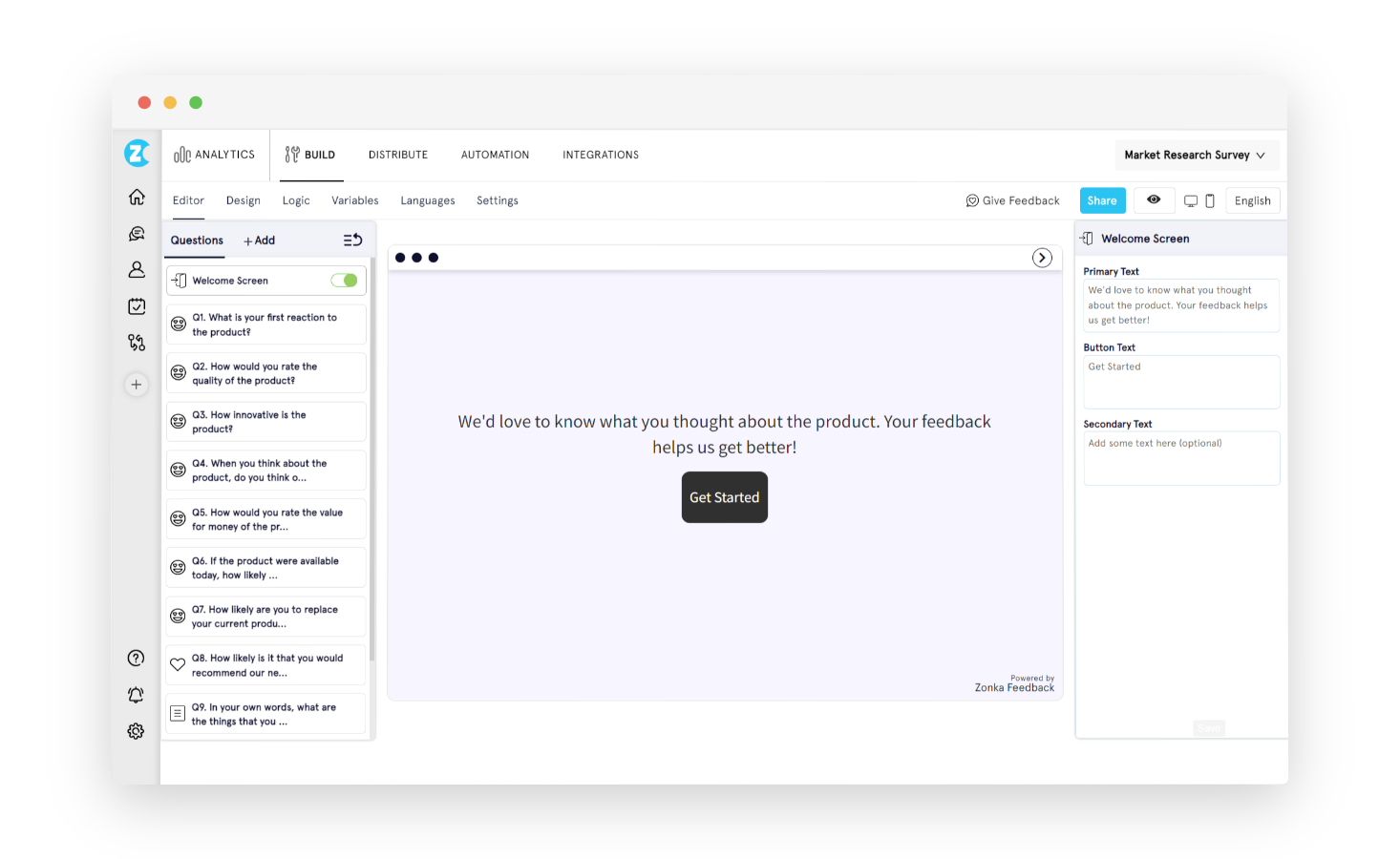
3. Design Effective Feedback Mechanisms
Creating feedback mechanisms that are both engaging and informative is key to gathering valuable insights. Here’s how to ensure your feedback forms and surveys are up to the task:
- Simplicity Matters: Design feedback forms and surveys that are clear, concise, and easy to understand. A SaaS company might use a mix of multiple-choice questions and open-ended questions to gather both quantitative and qualitative data.
- Variety of Questions: Use different question types, such as rating scale surveys and Likert scale survey questions, to capture diverse feedback. For example, a financial service app could ask users to rate their satisfaction with a new feature and then provide a comment box for additional thoughts.
- Personalization: Tailor feedback requests to specific customer segments or experiences. A luxury hotel might ask for feedback tailored to the type of service the guest experienced, such as dining or spa services.
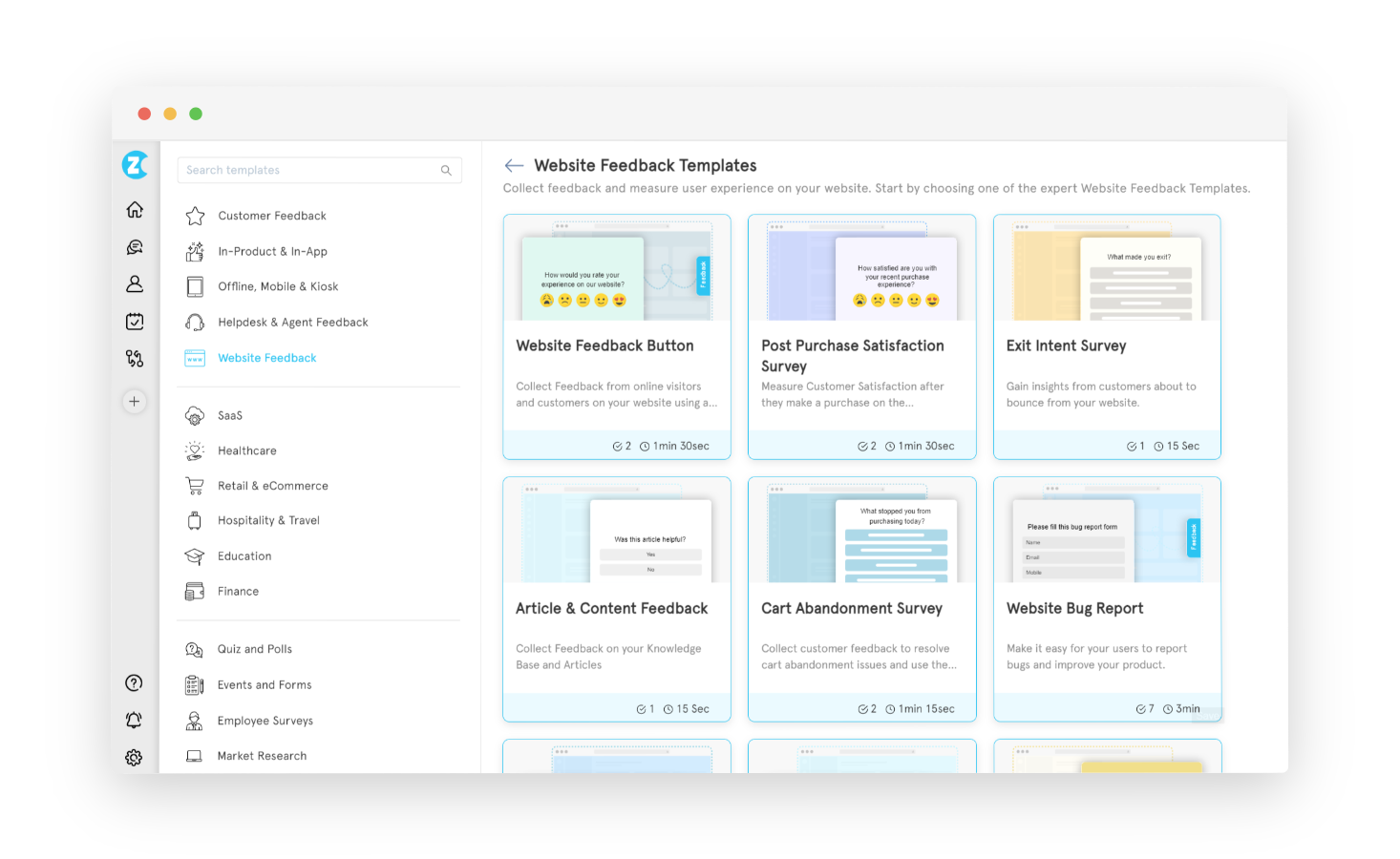
4. Integrating Feedback Across Channels
In today's omnichannel world, customers interact with businesses through multiple channels, including websites, mobile apps, social media, and physical stores. Integrating feedback across all customer touchpoints is like putting together the pieces of a puzzle—it’s essential for seeing the whole picture. Here’s how to do it effectively:
- Centralized Feedback Platform: Establish a central platform to collect and manage feedback from various sources. This will provide a unified view of customer sentiment and make it easier to identify trends and patterns.
- Data Synchronization: Ensure that feedback data from different channels is synchronized and accessible in a consistent format. This will prevent inconsistencies and enable accurate analysis.
- Consistent Feedback Mechanisms: Use similar feedback mechanisms across different channels to maintain consistency and make it easier for customers to provide input. This could include standardized surveys, rating scales, or live chat options.
- Cross-Channel Analysis: Analyze feedback data from multiple channels to identify trends and patterns that might not be apparent when looking at individual channels in isolation. This can help you uncover valuable insights about customer behavior and preferences.
5. Contextual Feedback Requests
Contextual feedback requests, triggered at specific moments within the user journey, can provide valuable insights and improve customer satisfaction. By aligning feedback requests with the user's experience, you can gather more relevant and actionable information. Here's how to do it:
- Trigger-Based Feedback: Prompt users for feedback at specific points in their journey, such as after completing a task, encountering an error, or making a purchase. This ensures that feedback is relevant and timely.
- In-App Chatbots: Leverage chatbots to collect feedback in a conversational manner. Chatbots can provide a more personalized and engaging experience, making it easier for users to share their thoughts.
- Overlays and Pop-Ups: Use overlays or pop-ups to display feedback requests at the appropriate time without disrupting the user's flow. These can be triggered based on specific actions or events, such as scrolling to the bottom of a page or clicking a button.
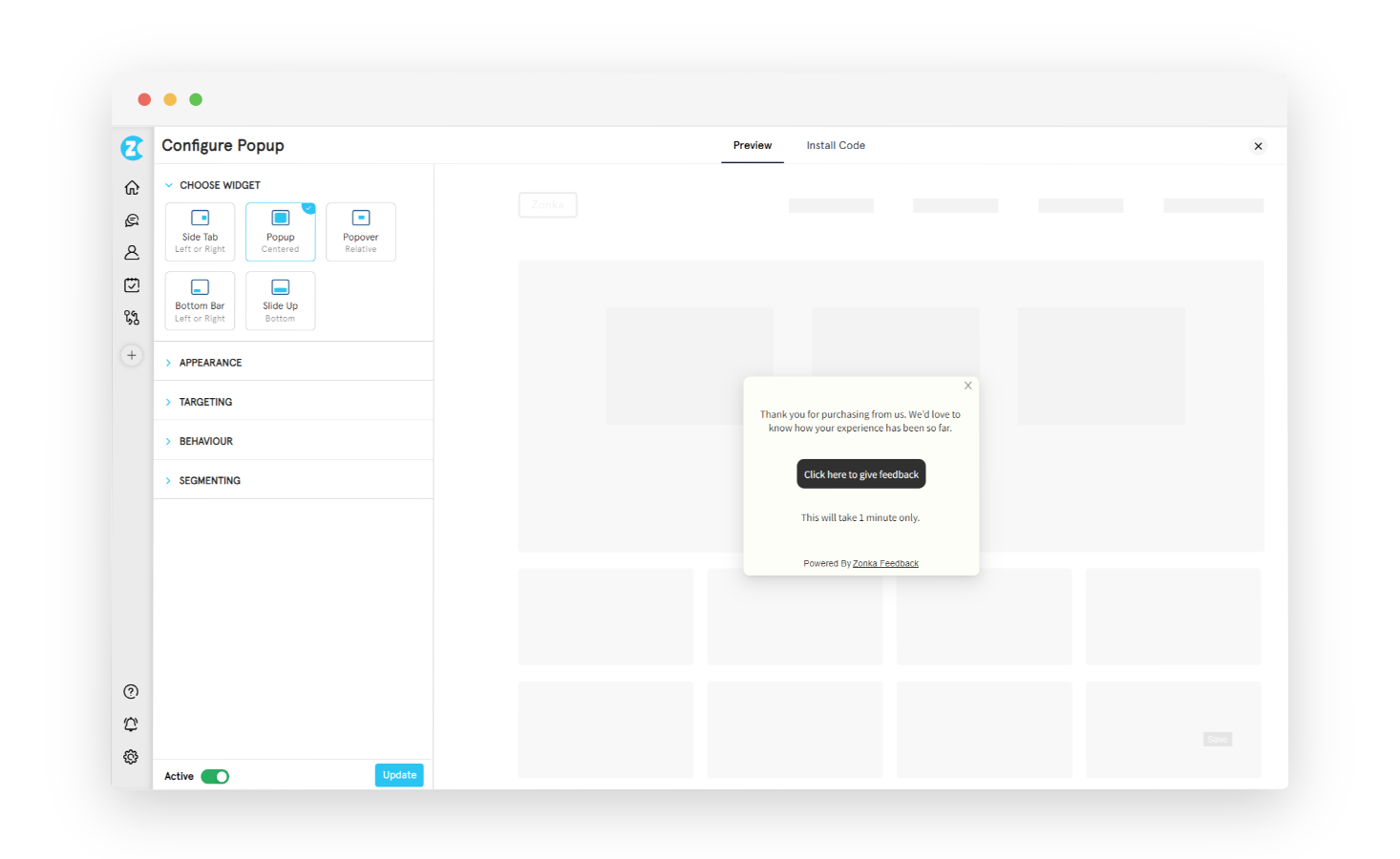
6. Automating Feedback Collection
Automation is essential for effectively managing large volumes of feedback and ensuring that it is processed efficiently. By setting up automated triggers and using AI-driven analytics, you can streamline the feedback collection process and gain valuable insights. Here's how you can leverage survey automation for collecting digital feedback.
- Automated Triggers: Implement automated triggers to request feedback at strategic points in the customer journey. For example, an e-commerce platform could send automated satisfaction surveys after a purchase, while a social media app could trigger feedback prompts based on user interactions.
- AI-Driven Analytics: Utilize AI survey tools to analyze feedback data and categorize responses. This can help identify common themes, sentiments, and areas for improvement. For instance, an AI-powered sentiment analysis tool can automatically categorize feedback as positive, negative, or neutral.
- Automated Routing: Set up automated rules to route feedback to the appropriate teams or departments based on content or source. This ensures that feedback is addressed by the relevant team and reduces response time.
- Automated Support: Implement automated support systems, such as chatbots or knowledge bases, to provide immediate assistance and reduce the need for human intervention.
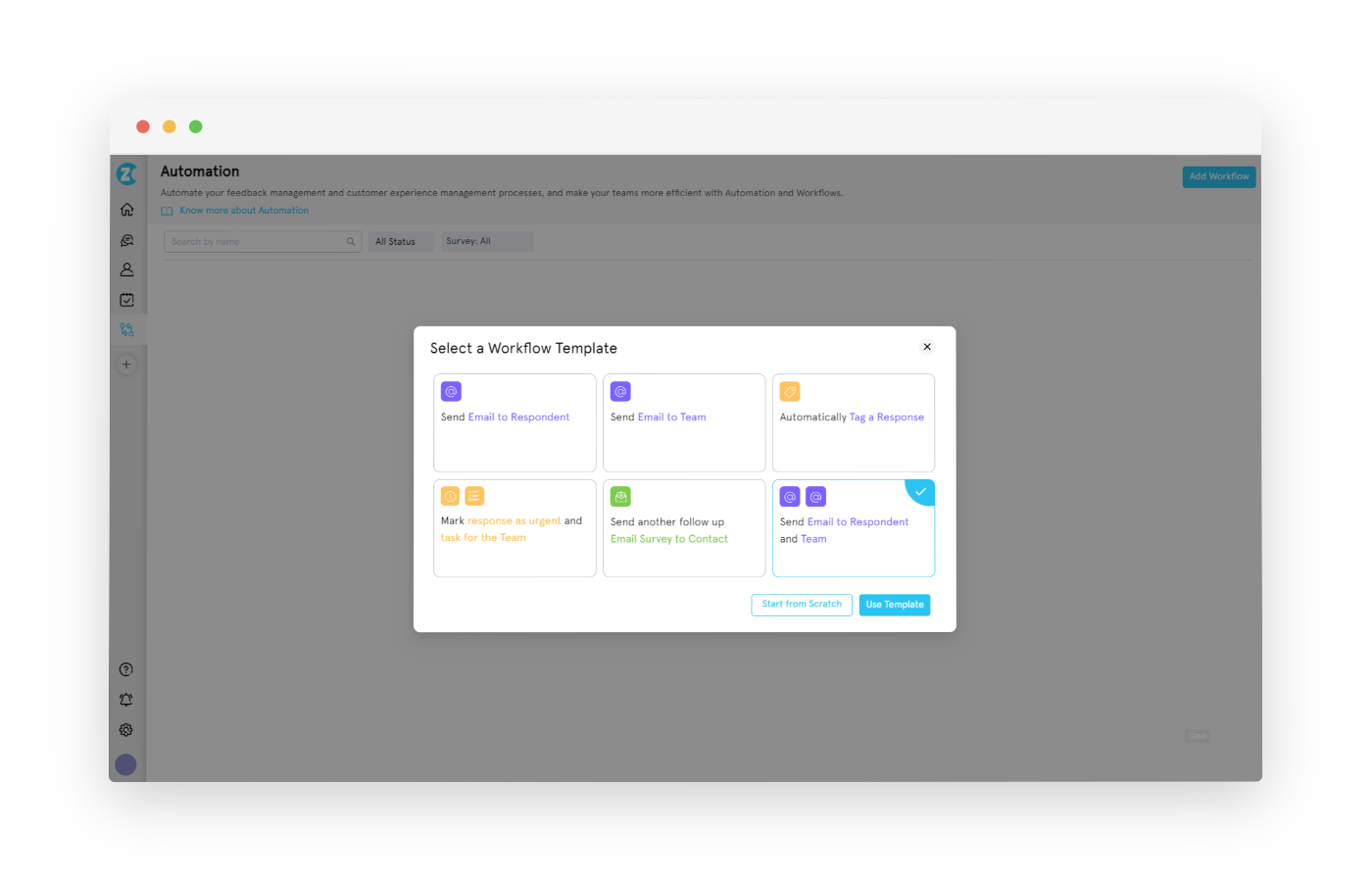
Analyzing Digital Feedback for Strategic Insights
Once you've collected feedback from various digital channels, the next step is to analyze the data to extract meaningful insights.
a. Segment and Identify Patterns
After collecting feedback from various digital channels, the next crucial step is to segment the data and identify patterns. This process allows you to uncover deeper insights that can inform strategic decisions.
- Segment by Demographics: Break down feedback by demographic factors such as age, location, or gender. For example, a global fashion retailer might notice that younger customers are more vocal about sustainability, leading them to prioritize eco-friendly products for that segment.
- Segment by Behavior: Analyze feedback based on customer behavior, such as purchase history or app usage. A streaming service could segment feedback from heavy users versus casual viewers, helping them tailor content recommendations and feature updates accordingly.
- Identify Recurring Themes: Look for common themes across different segments. For instance, a financial services firm might find that both young professionals and retirees express frustration with online account setup. Identifying this shared pain point allows the company to streamline the process for all users.
- Spot Emerging Trends: By analyzing patterns over time, you can spot emerging trends that might indicate shifts in customer expectations or market conditions. A tech company, for example, could identify a growing demand for a specific feature across multiple segments, guiding their product roadmap.

b. Utilize Sentiment Analysis
Sentiment analysis is a powerful tool in digital feedback analysis, allowing you to gauge the emotional tone behind customer feedback. By analyzing whether feedback is positive, negative, or neutral, you can prioritize responses and identify underlying issues that may not be immediately obvious.
- Understanding Customer Emotions: Sentiment analysis helps you understand how customers feel about your products or services. For example, a retail brand could use sentiment analysis to monitor social media feedback during a product launch. If the analysis reveals a surge in negative sentiment, the brand can quickly address concerns before they escalate, such as clarifying product features or issuing a public statement.
- Prioritizing Issues: You can prioritize issues based on the intensity of customer emotions. A software company, for example, might find that while a minor bug is generating some complaints, a critical feature failure is causing strong negative sentiment. By focusing on the most emotionally charged feedback first, the company can resolve the most pressing issues, improving overall customer satisfaction.
- Tracking Sentiment Over Time: Sentiment analysis also allows you to track how customer feelings evolve over time. The ability to track shifts in sentiment can provide early warnings of potential issues or indicate the success of recent improvements.
- Social Media Monitoring: You can even use sentiment analysis to track mentions of your brand on social media, identifying positive and negative sentiment.
- Customer Support Analysis: You can even use sentiment analysis to analyze customer support interactions, identifying areas where customers are expressing frustration or dissatisfaction. This can help you improve your support processes and address common issues.
- Product Feedback Analysis: You can analyze feedback on a new product launch, identifying areas of positive and negative sentiment. This can help you understand customer preferences and make improvements to future product iterations.

c. Leverage Predictive Analysis
Predictive analysis is a powerful technique that uses historical data to predict future trends and outcomes. When applied to digital feedback analysis, it can provide valuable insights into customer behavior, identify potential risks, and optimize business strategies.
For example, a subscription-based service might use predictive analysis to identify customers at risk of churning based on their usage patterns, feedback, and demographic information. By proactively reaching out to these customers with personalized offers or incentives, the company can reduce churn and improve customer retention.
Here are some key application of predictive analysis in digital feedback:
- Customer Churn Prediction: Identify customers at risk of churning based on their feedback and behavior patterns. This allows businesses to take proactive steps to retain these customers.
- Product Adoption Forecasting: Predict which products or features will be most popular based on customer feedback and market trends.
- Sentiment Trend Forecasting: Predict future changes in customer sentiment by analyzing historical feedback data and identifying emerging trends.
- Risk Assessment: Identify potential risks, such as product recalls or negative publicity, based on customer feedback and other data sources.
Closing the Digital Feedback Loop
Closing the digital feedback loop is a critical step in ensuring that the feedback you collect leads to tangible improvements and reinforces customer trust. It’s not just about gathering feedback; it’s about showing your customers that their voices lead to real action. Here's how you can do it:
- Acknowledge and Act: Start by acknowledging the feedback you receive, whether it's positive or negative. This can be done through automated thank-you messages or personalized follow-ups. Once feedback is acknowledged, act on it promptly to address any concerns or implement suggested improvements.
- Communicate Changes: Keep customers informed about the changes made as a result of their feedback. This could be through emails, updates in your app, or even a dedicated section on your website. Transparency in this process shows customers that their input is valued and that it leads to meaningful outcomes.
- Personalized Follow-Ups: For high-impact feedback, consider sending personalized follow-up messages to the customers who provided it. Let them know exactly how their suggestions were implemented or how their concerns were addressed. This not only closes the loop but also strengthens the relationship with those customers.
- Internal Feedback Sharing: Ensure that feedback and the actions taken are communicated internally across relevant teams. This creates a culture of continuous improvement and ensures that everyone in the organization understands the importance of customer feedback.
- Monitor Impact: After implementing changes based on feedback, monitor the impact to ensure that the solutions are effective. If the desired outcomes aren’t achieved, be ready to iterate and make further adjustments. This ongoing process of feedback, closing the feedback loop, and monitoring helps maintain a cycle of continuous improvement.
Best Practices in Managing Digital Feedback
To truly excel in managing digital feedback, you need to implement specific strategies that drive actionable insights and tangible outcomes. Include these:
- Feedback Prioritization Matrix: Develop a matrix to prioritize feedback based on impact and frequency. For example, a tech company might categorize feedback into urgent, high-impact issues versus lower-priority suggestions, allowing them to allocate resources effectively.
- Multichannel Sentiment Analysis: Apply sentiment analysis not just on individual channels but across all digital feedback channels combined. This cross-channel sentiment insight helps identify whether overall customer sentiment is trending positively or negatively, enabling proactive adjustments.
- Real-Time Feedback Dashboards: Implement real-time dashboards that allow different departments to monitor feedback relevant to their functions. For instance, product teams can see feature-related feedback, while customer support can track service-related issues, ensuring that each team can act swiftly.
- Feedback Segmentation by User Journey Stage: Segment feedback based on where the customer is in their journey (e.g., onboarding, active use, churn risk). This helps in identifying specific pain points at each stage and tailoring responses or interventions accordingly.
- Dynamic Feedback Loops: Create dynamic feedback loops that adapt based on customer interactions. For example, if a customer leaves positive feedback, the system could automatically prompt them for a testimonial or review. Conversely, negative feedback could trigger an escalation process to resolve the issue promptly.
- Predictive Feedback Integration: Combining data with predictive analytics to forecast future trends or issues. For example, if predictive models indicate a potential increase in negative feedback about a feature, preemptively address the feature’s weaknesses before they become widespread issues.
- Incentivized Deep-Dive Surveys: Occasionally, go beyond quick surveys by offering incentives for customers to participate in more detailed, qualitative feedback sessions. This could provide deeper insights that aren’t captured in standard feedback mechanisms.
Conclusion
Digital feedback is a vital tool for modern businesses seeking to enhance customer experience, innovate, and stay competitive. By effectively collecting, analyzing, and acting on feedback from various digital channels, companies can turn customer insights into actionable strategies. Whether it’s through real-time feedback, predictive analysis, or sentiment analysis, the key is to continuously evolve based on what your customers are telling you.
Leveraging survey tools can streamline this process, ensuring you capture meaningful insights at every touchpoint. Zonka Feedback is one such comprehensive digital feedback solution that can help you turn feedback into strategic actions.
With its real-time analytics, customizable surveys, seamless integration capabilities, AI powered text analysis and workflow automation, Zonka Feedback empowers you to capture, analyze, and act on feedback efficiently. Whether you’re looking to enhance customer satisfaction, refine your product offerings, or drive strategic growth, this survey software provides the features you need to make data-driven decisions and build stronger customer relationships.
So sign up for a 14-day free trial or schedule a demo to get started with collecting digital feedback and transform how you understand and engage with your customers.

